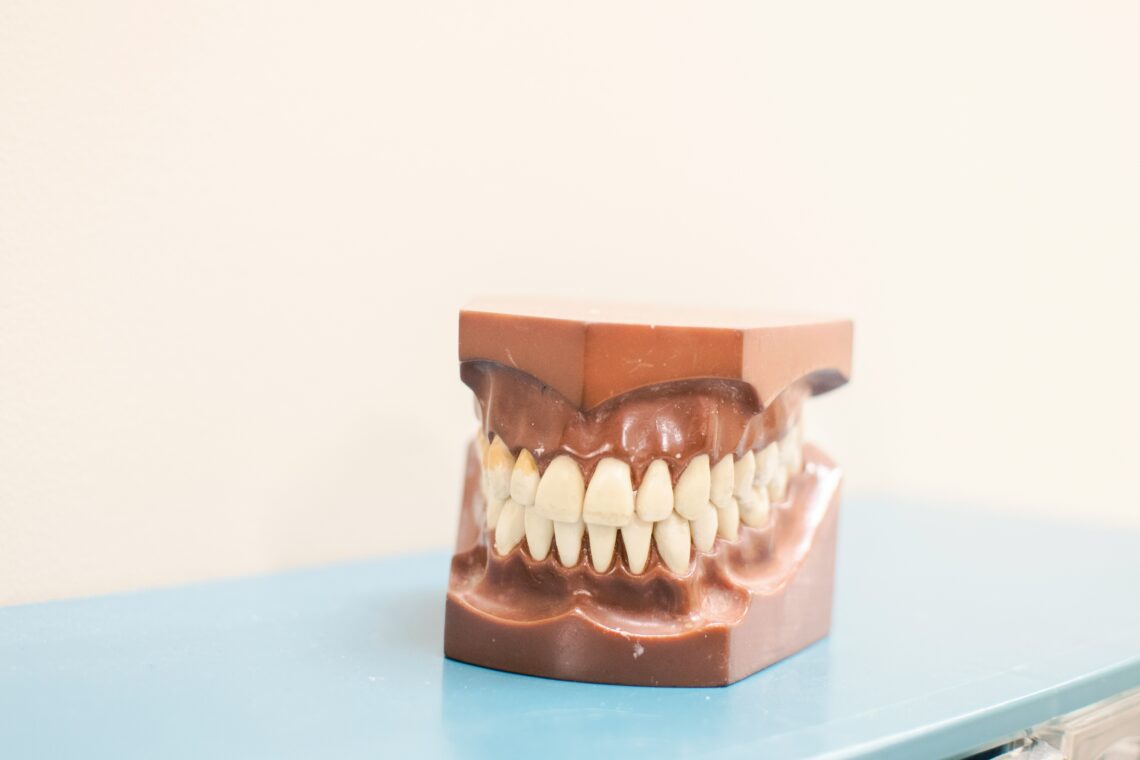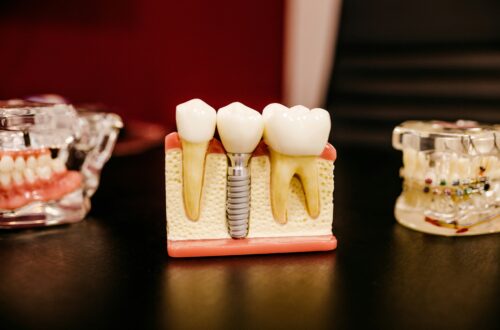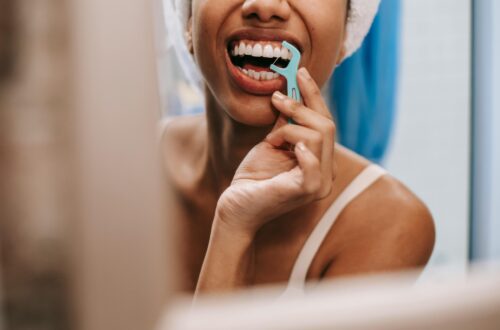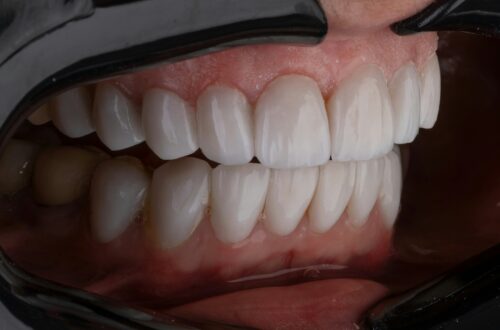Affiliate Disclaimer:
Some of the links on this website are affiliate links, which means that if you click on a link and make a purchase, we may earn a commission at no extra cost to you. This helps support the website and allows us to continue creating content. We only recommend products or services we personally use or genuinely believe will add value to our readers.
How to stop bleeding gums while brushing, you’re asking? Bleeding gums can be a real pain, both literally and figuratively. That pink tinge in the sink after brushing is enough to make anyone worry.
But don’t worry!
I’m here to guide you through some proven strategies to tackle this common oral health issue head-on.
Understanding the Root Cause
Bleeding gums are often a sign that something’s amiss in your oral health routine. It’s your body’s way of waving a red flag, saying, “Hey, pay attention here!” The most common culprit?
Gingivitis, the early stage of gum disease.
The Plaque Attack
At the core of most gum issues is our old nemesis: plaque. This sticky film of bacteria loves to hang out along your gumline, causing inflammation and irritation.
Left unchecked, it hardens into tartar, creating a perfect environment for harmful bacteria to thrive.
Angry, bleeding gums that make brushing feel like a chore.
The Gentle Touch: Brushing Techniques That Make a Difference
Many people mistakenly believe that scrubbing harder will clean better. In reality, this approach can do more harm than good.
The key to effective brushing comes from being gentle yet thorough.
The Two-Minute Tango
Start by setting a timer for two minutes. Yes, two whole minutes!
It might feel like an eternity at first, but your gums will thank you.
Use gentle, circular motions, and focus on massaging your gums rather than scrubbing them.
The Right Tools for the Job
Investing in a soft-bristled toothbrush can make a world of difference. Hard bristles might seem more effective, but they’re actually more likely to irritate your gums and wear down your enamel.
An electric toothbrush can be a game-changer, providing consistent pressure and motion that’s hard to copy manually.
How to Stop Bleeding Gums While Brushing?
Beyond the Brush: Holistic Approaches to Gum Health
Stopping bleeding gums requires a comprehensive approach that extends beyond those two minutes of brushing. Creating an overall environment where your gums can thrive involves several key factors.
The Probiotic Revolution: Introducing ProDentim
In light of these new findings, dental professionals and researchers are turning to probiotics as a potential solution for maintaining oral health and preventing cavities. One innovative product that’s emerged from this research is ProDentim, a probiotic supplement specifically designed to support oral health.
ProDentim features a clinically researched combination of 3.5 billion probiotic strains and essential nutrients. Its formulation includes:
- Lactobacillus Paracasei: This strain supports gum health and helps keep sinuses clear.
- B.lactis BL-04®: Aids in maintaining a balanced oral microbiome and supports overall immune health.
- Lactobacillus Reuteri: This probiotic supports a healthy mouth by reducing inflammation and maintaining a balanced oral environment.
The Flossing Factor
I know, flossing isn’t exactly the highlight of anyone’s day. But it’s crucial for removing plaque and food particles from places your toothbrush can’t reach.
Try different types of floss or interdental brushes to find what works best for you.
Consistency is key, aim to floss at least once a day, preferably before bedtime.
Rinse and Repeat
Saltwater rinses can be incredibly soothing for irritated gums. Mix half a teaspoon of salt in a cup of warm water and swish gently for about 30 seconds.
This simple remedy can help reduce inflammation and promote healing.
For an extra boost, consider using an antibacterial mouthwash to help combat harmful bacteria.
Nutrition for Healthy Gums
Your gums need proper nutrition to stay strong and resilient. Vitamin C plays a crucial role in gum health, so load up on citrus fruits, berries, and leafy greens.
Omega-3 fatty acids, found in fish and flaxseeds, can help reduce inflammation throughout your body, including your gums.
Don’t forget about vitamin K, it’s essential for blood clotting and can be found in foods like kale, spinach, and broccoli.
The Lifestyle Connection
What happens outside your mouth can significantly impact your gum health. Let’s explore some lifestyle factors that play a role in maintaining healthy gums.
Stress Less for Healthier Gums
High stress levels can weaken your immune system, making it harder for your body to fight off gum infections. Find stress-reduction techniques that work for you, whether it’s meditation, exercise, or simply taking time to relax.
Your gums will thank you for it!
Kick the Habit
If you’re a smoker, here’s another reason to quit: smoking is terrible for your gum health. It reduces blood flow to your gums, making them more susceptible to infection and slower to heal.
Quitting smoking can dramatically improve your oral health and overall well-being.
Stay Hydrated
Drinking plenty of water throughout the day helps wash away bacteria and food particles from your mouth. It also promotes saliva production, which is your body’s natural defense against oral bacteria.
Aim for at least 8 glasses of water a day to keep your mouth and gums happy.
When to Call in the Pros
While these strategies can make a big difference, sometimes you need professional help. If your gums continue to bleed despite your best efforts, it’s time to see a dentist.
They can perform a deep cleaning called scaling and root planing, which removes tartar buildup and helps your gums reattach to your teeth.
Regular Check-ups
Don’t wait for a problem to arise before visiting your dentist. Regular check-ups and professional cleanings can help prevent issues before they start.
Aim for at least two dental visits per year, or more if recommended by your dentist.
The Road to Recovery: Patience and Persistence
Healing bleeding gums isn’t an overnight process. It takes time and consistent effort.
But with patience and the right approach, you can turn those bleeding gums into healthy, pink gums that make you want to smile.
Pro Tip: Track Your Progress
Keep a gum health journal. Note how often your gums bleed and any changes you observe.
This can help you stay motivated and identify what’s working best for you.
It’s also valuable information to share with your dentist during check-ups.
Advanced Techniques for Gum Health
Once you’ve mastered the basics, consider incorporating some advanced techniques into your oral care routine.
Oil Pulling
This ancient Ayurvedic practice involves swishing oil (usually coconut or sesame) in your mouth for 15-20 minutes. While scientific evidence is limited, many people swear by its ability to reduce plaque and improve gum health.
Gum Massage
Using clean fingers or a gum stimulator, gently massage your gums in circular motions. This can help stimulate blood flow and promote healthier gum tissue.
Just be sure to use gentle pressure, you’re not kneading dough!
Herbal Remedies
Some herbs have natural anti-inflammatory and antibacterial properties that can benefit gum health. Green tea, for example, contains antioxidants that may help reduce inflammation.
Aloe vera gel applied directly to the gums can soothe irritation.
Always talk to your dentist before trying any new remedies.
The Role of Technology in Gum Health
Advancements in dental technology have provided us with new tools to combat gum issues.
Water Flossers
These devices use a stream of pulsating water to clean between teeth and along the gumline. They can be especially helpful for people with braces or those who struggle with traditional flossing.
Smart Toothbrushes
Some electric toothbrushes now come with apps that track your brushing habits and provide real-time feedback. This can help confirm you’re covering all areas of your mouth and using the right amount of pressure.
Understanding Gum Disease Progression
Bleeding gums are often the first sign of gum disease, but it’s important to understand how this condition can progress if left untreated.
Gingivitis
This is the earliest stage of gum disease, characterized by inflammation and bleeding. The good news?
It’s reversible with proper care and treatment.
Periodontitis
If gingivitis is left untreated, it can progress to periodontitis. This more serious condition involves the gums pulling away from the teeth, forming pockets that can become infected. Without treatment, periodontitis can lead to bone loss and tooth loss.
The Mouth-Body Connection
Your oral health is closely linked to your overall health. Gum disease has been associated with several systemic health issues, including:
Heart disease
Diabetes
Respiratory infections
Pregnancy complications
By taking care of your gums, you’re not just protecting your smile, you’re investing in your overall health and well-being.
Gum Health for Special Populations
Certain groups may need to pay extra attention to their gum health:
Pregnant Women
Hormonal changes during pregnancy can increase the risk of gum problems. Regular dental check-ups and meticulous oral hygiene are especially important during this time.
Diabetics
People with diabetes are more susceptible to gum disease. Maintaining good blood sugar control and practicing excellent oral hygiene can help mitigate this risk.
Older Adults
As we age, our risk for gum disease increases. Dry mouth, a common side effect of many medications, can also contribute to gum problems.
Stay vigilant with your oral care routine and talk about any concerns with your dentist.
The Importance of Prevention
While treating bleeding gums is important, preventing them in the first place is even better. Here are some proactive steps you can take:
Balanced Diet
A diet rich in vitamins and minerals supports gum health. Focus on whole foods, plenty of fruits and vegetables, and lean proteins.
Limit sugary and acidic foods that can contribute to tooth decay and gum irritation.
Quit Smoking
We’ve mentioned it before, but it bears repeating: smoking is terrible for your gums. If you’re struggling to quit, talk to your healthcare provider about smoking cessation programs.
Manage Stress
Chronic stress can weaken your immune system, making you more susceptible to gum infections. Find healthy ways to manage stress, such as exercise, meditation, or talking to a therapist.
Stay Hydrated
Drinking plenty of water helps wash away bacteria and food particles, and promotes saliva production, your mouth’s natural defense system.
Exercises to Reinforce Your Gum Health Routine
The Two-Minute Challenge: Time yourself brushing for a full two minutes, focusing on gentle, circular motions.
Pay extra attention to the gumline and hard-to-reach areas.
Floss Finesse: Practice proper flossing technique, making sure to curve the floss around each tooth in a C-shape.
Be gentle as you move the floss up and down along the sides of each tooth.
Gum Massage: Using clean fingers, gently massage your gums in circular motions to stimulate blood flow.
This can be done for a few minutes each day, either during your regular brushing routine or as a separate activity.
Hydration Station: Set reminders to drink water throughout the day to keep your mouth hydrated and help wash away bacteria.
Aim for at least 8 glasses a day.
Tongue Scraping: Use a tongue scraper or the back of your toothbrush to gently clean your tongue.
This helps remove bacteria that can contribute to gum problems.
Stress-Busting Breath Work: Practice deep breathing exercises for a few minutes each day to help manage stress levels.
This can indirectly benefit your gum health by supporting your overall immune function.
The Importance of Consistency
Achieving and maintaining healthy gums requires consistent effort. It’s not about perfection, but rather about developing good habits that you can stick to over time.
Here are some tips to help you stay on track:
Set reminders on your phone for brushing and flossing
Keep floss or interdental brushes in many locations (bathroom, car, desk) so you always have them handy
Reward yourself for sticking to your oral care routine (but not with sugary treats!)
Partner up with a friend or family member for accountability
Small changes can lead to big improvements in your gum health over time.
When to Seek Professional Help
While many cases of bleeding gums can be addressed with improved home care, there are times when professional intervention is necessary. Contact your dentist if:
Your gums bleed excessively or don’t stop bleeding
You experience persistent bad breath
Your gums are swollen, red, or tender
You notice your teeth becoming loose
You have any changes in your bite or the way your teeth fit together
Early intervention can prevent minor issues from becoming major problems.
The Future of Gum Health
Exciting developments in dental research are paving the way for new treatments and prevention strategies for gum disease. Some areas of focus include:
Probiotics specifically designed for oral health
Gene therapy to enhance the body’s natural healing processes
Advanced imaging techniques for early detection of gum disease
Personalized treatment plans based on an person’s oral microbiome
While these developments are promising, the foundations of good gum health stay the same: consistent oral hygiene, a healthy lifestyle, and regular dental check-ups.
Embracing Your Gum Health Journey
Improving your gum health is a life-long habit to have formed, not a destination to reach. There may be setbacks along the way, but don’t get discouraged. Every positive step you take is contributing to healthier gums and a brighter smile.
Healthy gums are the foundation of a healthy mouth. By implementing these strategies and staying consistent, you’re not just stopping bleeding gums – you’re investing in your overall oral health and well-being.
Key Takeaways:
Be gentle but thorough when brushing
Use the right tools, including a soft-bristled toothbrush
Don’t neglect flossing and proper nutrition
Address lifestyle factors like stress and smoking
Seek professional help if bleeding continues
Stay patient and consistent in your oral care routine
People Also Asked
What causes gums to bleed when brushing?
Bleeding gums when brushing are often caused by plaque buildup along the gumline, leading to inflammation and gingivitis. Other factors can include aggressive brushing, hormonal changes, certain medications, and vitamin deficiencies.
How long does it take for bleeding gums to heal?
With proper care and consistent oral hygiene, mild cases of bleeding gums can show improvement within a few days to two weeks. However, more severe cases may take longer and need professional treatment.
Can stress cause bleeding gums?
Yes, stress can contribute to bleeding gums. High stress levels can weaken your immune system, making it harder for your body to fight off the bacteria that cause gum inflammation and bleeding.
Are electric toothbrushes better for bleeding gums?
Electric toothbrushes can be useful for people with bleeding gums as they provide consistent pressure and motion, reducing the risk of over-brushing. Many also come with pressure sensors to prevent applying too much force.
Does saltwater help bleeding gums?
Saltwater rinses can help soothe irritated gums and promote healing. The salt helps reduce inflammation and has mild antibacterial properties.
However, it should not replace regular brushing and flossing.
Can vitamin deficiency cause bleeding gums?
Yes, certain vitamin deficiencies can contribute to bleeding gums. Vitamin C and vitamin K are particularly important for gum health.
A balanced diet or supplements (under medical supervision) can help address these deficiencies.
Is it normal for gums to bleed sometimes?
Occasional, minor bleeding (like when you start a new flossing routine) can be normal. However, regular or excessive bleeding is not normal and should be addressed with improved oral hygiene and potentially a visit to the dentist.
Can pregnancy cause bleeding gums?
Yes, hormonal changes during pregnancy can increase the risk of gum inflammation and bleeding. This condition, known as pregnancy gingivitis, affects many pregnant women and requires extra attention to oral hygiene.
How frequently should I change my toothbrush to avoid bleeding gums?
It’s best to swap out your toothbrush—or the head of your electric brush—every three to four months, or earlier if the bristles start to wear down. Frayed bristles don’t clean as effectively and may cause gum irritation.
Can certain medications cause bleeding gums?
Some medications, particularly blood thinners, can increase the likelihood of bleeding gums. Always tell your dentist about any medications you’re taking, as they may need to adjust your treatment plan accordingly.





